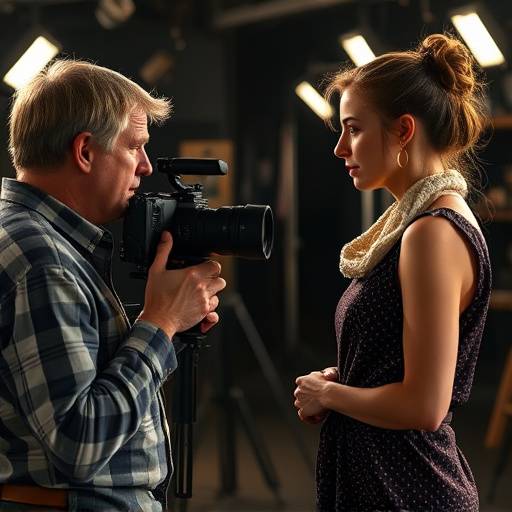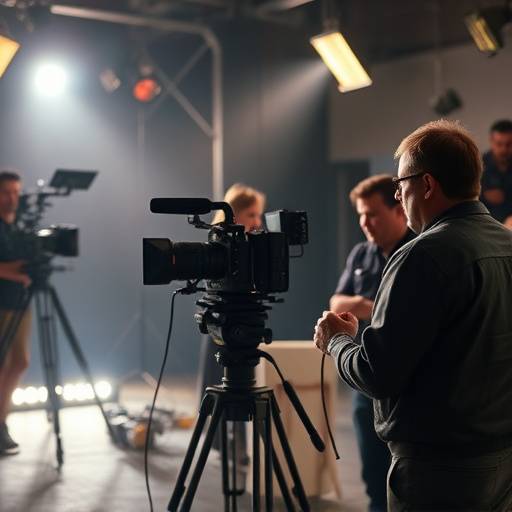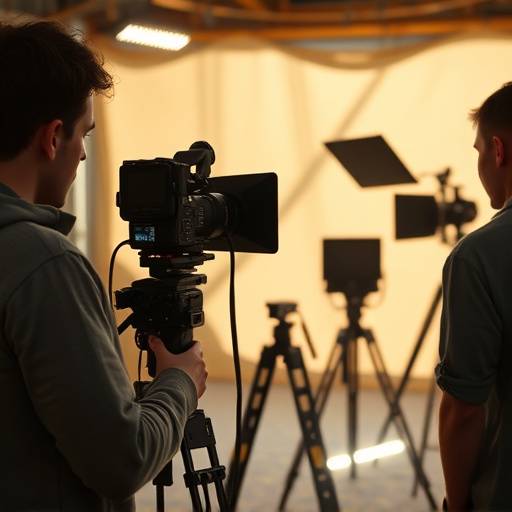The Director's Cut: Insights and Inspiration for Filmmakers

The Art of Actor Direction: Building Trust and Eliciting Performance
Directing actors is a delicate dance, requiring empathy, communication, and a clear vision. The best directors understand how to create a safe and supportive environment where actors feel comfortable taking risks and exploring their characters. This article delves into the techniques that seasoned directors like Ava Thompson use to build trust with their cast, provide effective feedback, and unlock authentic performances.
From initial script readings to final takes, the director's role is to guide the actor on a journey of discovery. This involves understanding their process, respecting their instincts, and providing the tools they need to fully inhabit their roles. Key elements include clear communication of the character's motivations, providing specific and actionable feedback, and allowing the actor to experiment with different interpretations. Remember, collaboration is key. A strong director listens to their actors, incorporates their ideas, and works together to create a cohesive and compelling performance.
Read More

Storyboarding: Visualizing Your Film Before a Single Shot
Before a single camera rolls, a director must have a clear visual plan. Storyboarding is a crucial tool for achieving this, allowing filmmakers to map out each shot, plan camera angles, and ensure visual continuity. This article explores the benefits of storyboarding, provides practical tips for creating effective boards, and highlights how famous directors have used storyboards to bring their visions to life.
A well-crafted storyboard can save time and money on set by clearly communicating the director's intentions to the entire crew. It allows for early identification of potential problems, facilitates pre-visualization of complex scenes, and provides a valuable reference point during filming. Whether you're a seasoned professional or a budding filmmaker, mastering the art of storyboarding is essential for achieving a visually compelling and cohesive film. Consider using digital tools for collaboration, and don't be afraid to iterate and refine your boards as the project evolves.
Read More

Location, Location, Location: The Importance of Finding the Perfect Setting
The setting of a film can be as important as the characters and the story itself. Choosing the right location can enhance the narrative, create atmosphere, and add depth to the viewing experience. This article examines the factors directors consider when scouting locations, including budget, logistics, and the overall aesthetic of the film. We also explore how directors have used locations to create iconic and memorable cinematic moments.
From bustling city streets to serene countryside landscapes, the perfect location can transform a scene and elevate the entire film. Considerations include accessibility, permits, available light, and the ability to control the environment. A thorough location scout involves careful observation, detailed note-taking, and a keen eye for detail. Remember, the location should serve the story, not the other way around. Choose settings that resonate with the characters, enhance the themes, and contribute to the overall visual impact of the film. Don't underestimate the power of a well-chosen location to immerse the audience in the world of your film.
Read More

Building a Strong Crew: The Director as a Leader and Collaborator
Directing a film is not a solo endeavor; it's a collaborative process that requires a strong and dedicated crew. This article discusses the importance of building a cohesive team, fostering open communication, and empowering each member to contribute their best work. We explore the qualities of an effective director as a leader, including vision, empathy, and the ability to inspire others.
A successful director understands that their role is not just to make decisions, but to facilitate the creative process and guide the team towards a common goal. This involves clear communication of the vision, active listening to the ideas of others, and creating a supportive and collaborative environment. Building trust, respecting expertise, and celebrating successes are essential for fostering a strong and motivated crew. Remember, a film is only as good as the team that creates it. Invest in your crew, empower them to excel, and watch your vision come to life in ways you never imagined.
Read More

Directing on a Budget: Tips for Indie Filmmakers
Making a film on a limited budget can be challenging, but it can also be incredibly rewarding. This article offers practical tips for indie filmmakers on how to maximize their resources, get creative with their storytelling, and bring their visions to life without breaking the bank. We explore techniques for cost-effective filmmaking, including resourceful location scouting, creative use of lighting, and effective post-production strategies.
Indie filmmaking requires ingenuity, resourcefulness, and a willingness to think outside the box. Prioritize your spending, focus on what's essential to the story, and don't be afraid to ask for help. Network with other filmmakers, leverage local resources, and explore alternative funding options. Remember, a compelling story and a passionate team can overcome budgetary limitations. Embrace the challenges, stay true to your vision, and let your creativity shine. The world needs more authentic and independent voices in cinema.
Read More